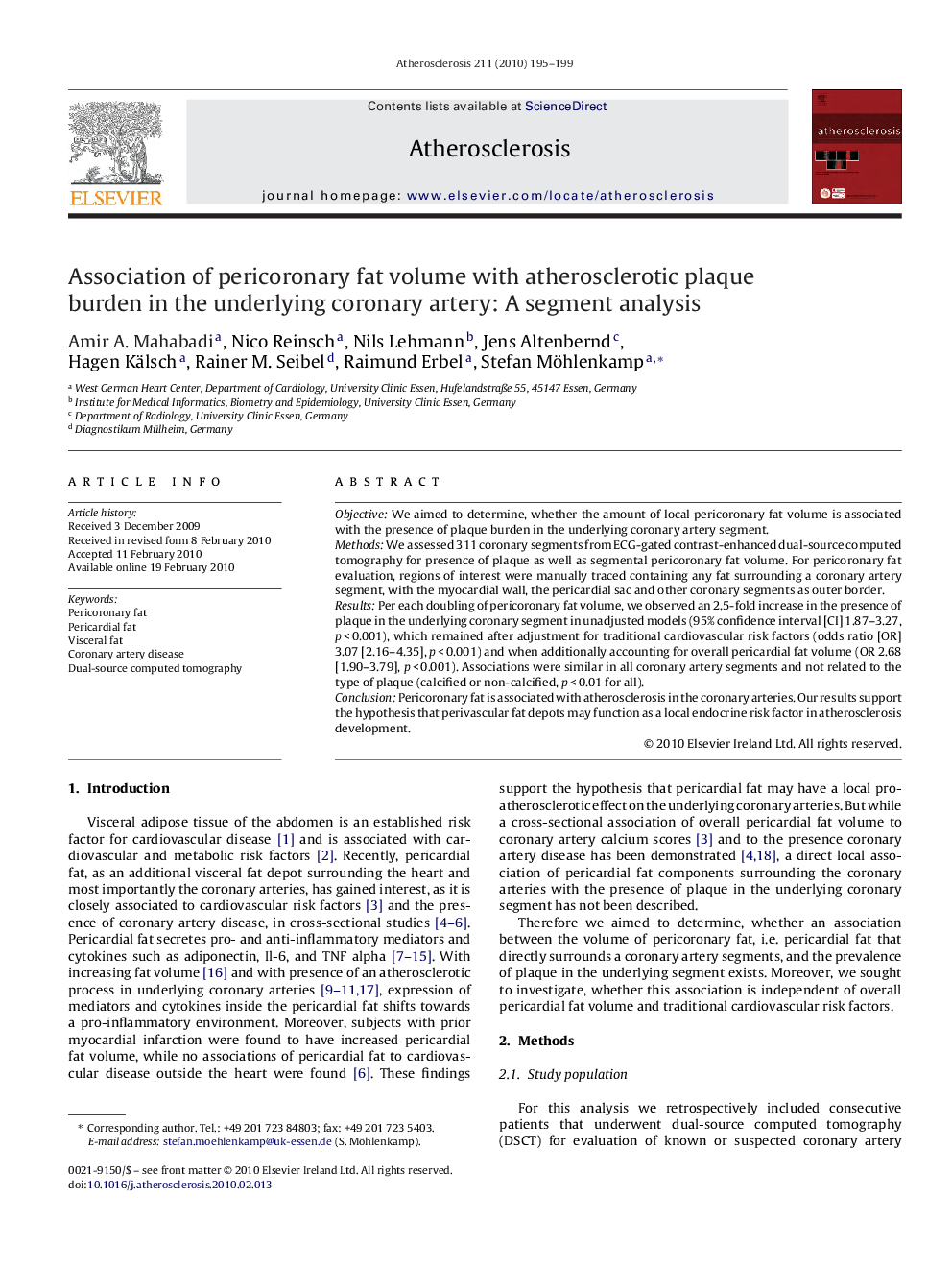| Article ID | Journal | Published Year | Pages | File Type |
|---|---|---|---|---|
| 5950311 | Atherosclerosis | 2010 | 5 Pages |
ObjectiveWe aimed to determine, whether the amount of local pericoronary fat volume is associated with the presence of plaque burden in the underlying coronary artery segment.MethodsWe assessed 311 coronary segments from ECG-gated contrast-enhanced dual-source computed tomography for presence of plaque as well as segmental pericoronary fat volume. For pericoronary fat evaluation, regions of interest were manually traced containing any fat surrounding a coronary artery segment, with the myocardial wall, the pericardial sac and other coronary segments as outer border.ResultsPer each doubling of pericoronary fat volume, we observed an 2.5-fold increase in the presence of plaque in the underlying coronary segment in unadjusted models (95% confidence interval [CI] 1.87-3.27, p < 0.001), which remained after adjustment for traditional cardiovascular risk factors (odds ratio [OR] 3.07 [2.16-4.35], p < 0.001) and when additionally accounting for overall pericardial fat volume (OR 2.68 [1.90-3.79], p < 0.001). Associations were similar in all coronary artery segments and not related to the type of plaque (calcified or non-calcified, p < 0.01 for all).ConclusionPericoronary fat is associated with atherosclerosis in the coronary arteries. Our results support the hypothesis that perivascular fat depots may function as a local endocrine risk factor in atherosclerosis development.
